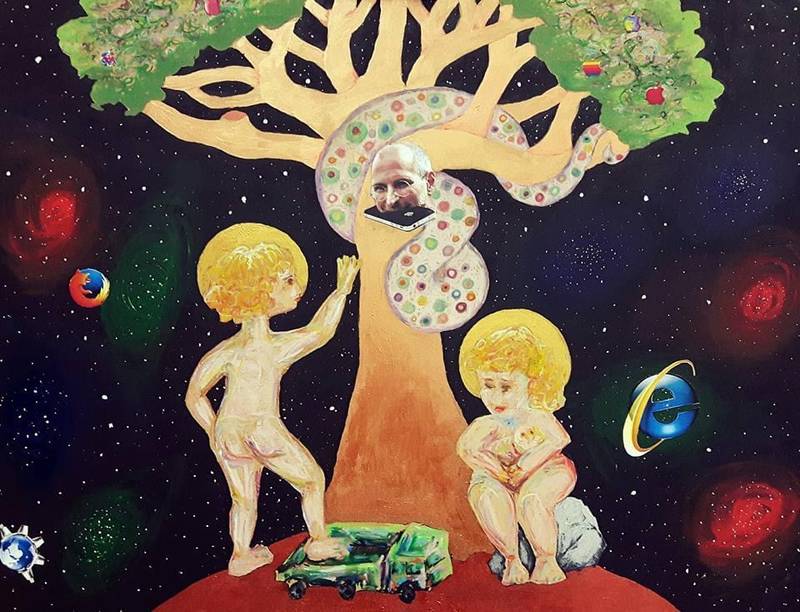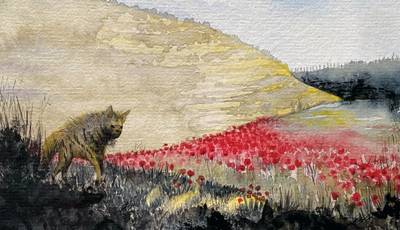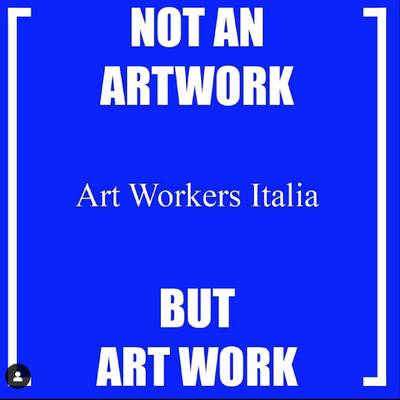

Aneta Atsova, 2016, mixed media, (painting made to be submitted to the Museum of Bad Art)
Aneta Atsova is a visual artist and musician based in Finland. She also goes under the musical pseudonym Annie Trippah. A former Aalto master’s graduate in Visual Culture, Contemporary Art and Curation, she specializes in various disciplines including sculpture, video and audio, painting and digital media.
During my master’s years of study in the field of art it kept occurring to me that it was a mere convention (not necessarily the brilliance of ideas) that separated ‘good’ artists from the rest. There were the few, God’s anointed ones that had tricked us all into thinking art was divine and genius - given by nature. Art universities didn’t teach you that art was a game with certain rules, they rather taught you how to worship the ones who’d figured it all out by themselves. But how about those of us who didn’t want to play by the rules, what was our alternative? Then I found out someone, somewhere had already thought about it, establishing a respective institution: The Museum of Bad Art. Now, that was a game I’d rather learn how to play, I thought. Besides, what’s more genuine than putting all your efforts into what you truly believe in, and failing? Still, to this day, I believe that being a ‘bad’ artist is the only honorable choice out there, since you’ve been denied the ‘divine’. I guess, I’ve gotten good at it with time, yet, not that good, hopefully.
Dear Museum Of Bad Art (MOBA),
After a long hesitation and immense inner struggle, I decided to share my confessions with you.
Augustine of Hippo once made a clear distinction between ‘The City of God’ 1 permeated by virtue and divine omniscience, and that of men, corrupted by the free will consigning humankind to a life of sin and decay. By the same token, as I never considered myself worthy of a real artist’s title and merits, I felt the profound need to seek refuge in a place alternative to the divine ‘City of Art’ where, my heart grievingly admits, I barely belong.
Before I came across your institution, I felt desperate and homeless, even worse, I felt like a failure. In the light of the great masters’ marvelous work all other artistic bursts along the ages appeared to me dull and tasteless in comparison. Through you, I discovered the value of darkness and shadow. And this notion set me free of the need to describe myself as an artist entirely. Now I can simply lift an eyebrow to an irritating, but well-known piece of junk that costs a fortune, or even dismiss a whole art movement simply due to reasons of it being annoying. I mean, there are no conventions to being a bad artist, or are there?
In the light of the great masters’ marvelous work all other artistic bursts along the ages appeared to me dull and tasteless in comparison. Through you, I discovered the value of darkness and shadow. And this notion set me free of the need to describe myself as an artist entirely.
As we all know, art is rather subjective matter, often treated objectively. It’s simply an obsession just like any other, with its corresponding side effects. According to James Feibleman a side-effect 2 of an effort to produce good art is simply bad art. Uncyclopedia explains bad art as the ‘art that is created with the best of intentions, but gone horribly wrong’ 3. It even states a list of criteria:
- The piece must have sincerity behind its creation;
- The creator must be driven by the desire to create, rather than the desire to inflict suffering;
- The creation must completely engross its creator, who therefore has no time to think about perspective, technique, or color;
- The creation must depict a subject that will possess its creator, robbing them of all sense and sensibility during the process of creation; and
- Ultimately, despite the best of intentions, the creation must utterly and completely fail to have its desired effect when viewed by anyone other than the “artiste.” 4
Nevertheless, I seem to have trouble understanding some basics with respect to the sincerity of bad art. Let’s imagine one day you learned how to make good art, could you go back to genuinely making bad art? Does training stand in the way between good and bad art, making the process irreversible? In other words, can you train (or, rather, untrain) to become a bad artist? I can imagine it fairly difficult staying true to bad art, once you’ve received training. But can you be proficient at bad art? And to what extent a subject like this should be exercised before the bad art is irrevocably spoiled? Does spoiled bad art necessarily mean good art?
I’ve always felt the inexorable need of indulging in whatever form of art, but in your face I seem to have found just the right platform for such an endeavour. Your organisation is like an Unholy Monastery offering a shelter and comfort to the soul of a passionate art pagan, stripped off from the pretentious whimsical aesthetic awes of the orthodox ‘City of Art’.
Yours sincerely,
Anonymous Bewildered Bad Artist (ABBA)







